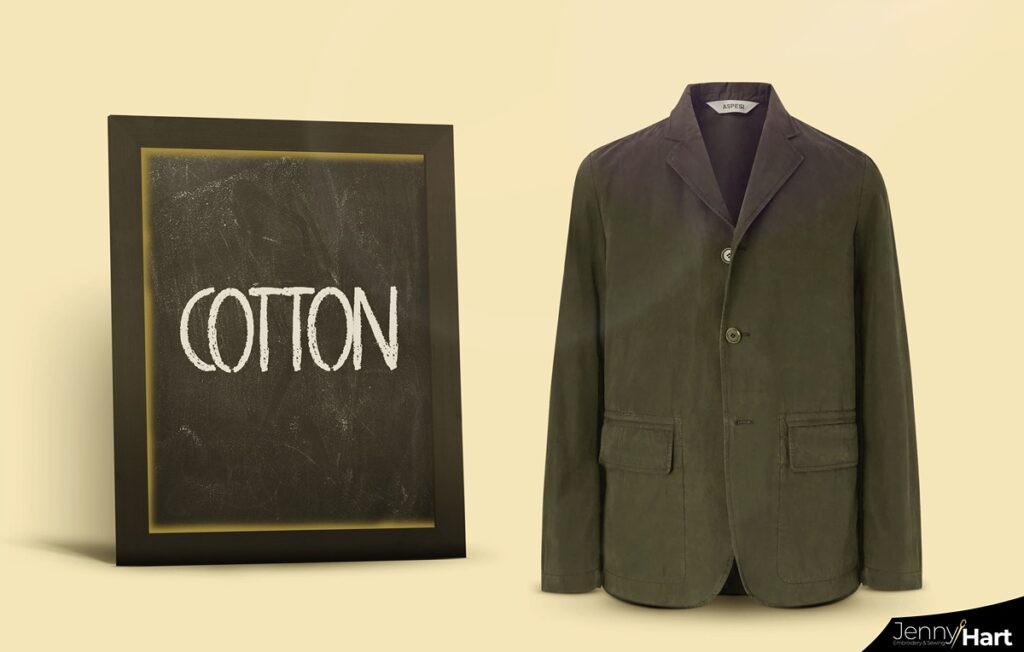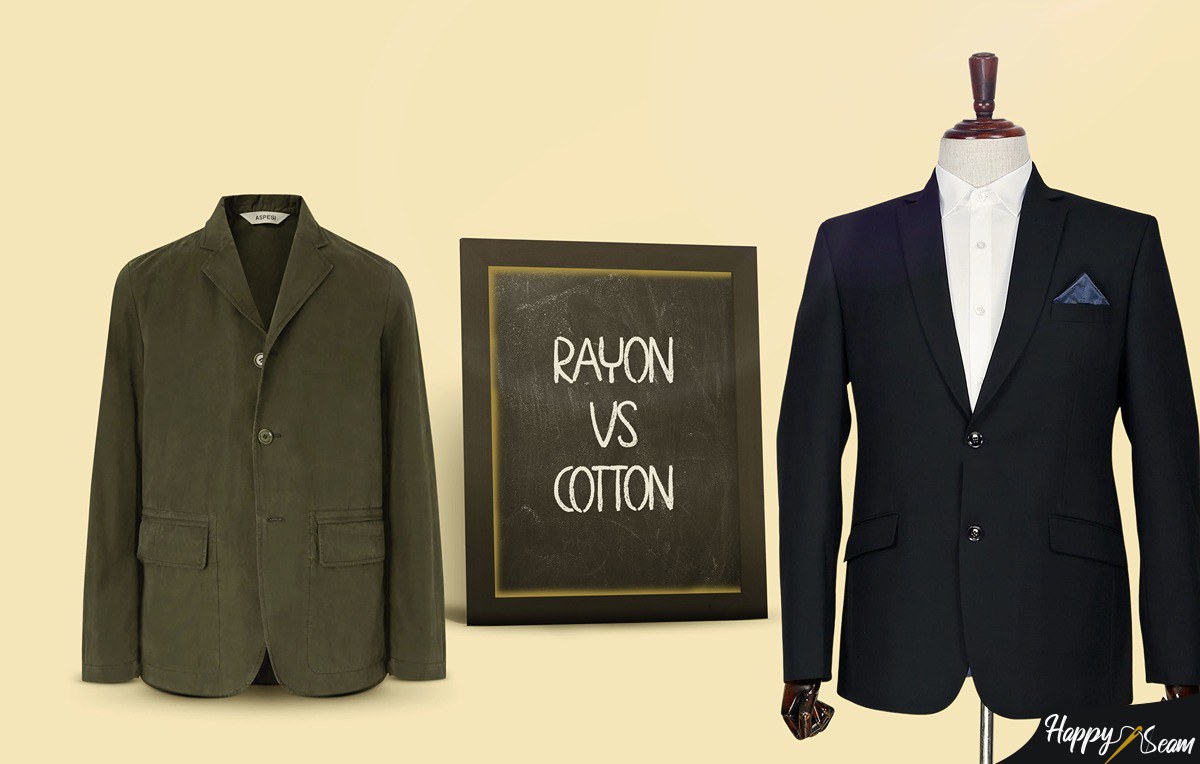If you find yourself debating on the best choice of material, between rayon and cotton when shopping for a quality blanket or even a well-made t-shirt, rayon and cotton are the most preferable options. Constantly checking a product’s tag and still being puzzled about its characteristics happens to most of us, more than we would like to admit.
Trying to compare a man-made material like rayon to a source found in nature itself might seem absurd at first. In this day and time, people gradually gravitate towards bio-natural components. While this is true, that does not mean that cotton is a perfect choice and that rayon should not even be considered. They both are composed of good qualities and bad ones, qualities that I will happily explain as we go along this article.
Key Takeaways
- Rayon is a breathable fabric that keeps cool while cotton keeps heat trapped for warmth.
- Rayon is cheaper to produce and buy.
- Cotton has a longer use life than rayon.
- Both fabrics are delicate to maintain.
- Rayon is more biodegradable than cotton and is more eco-friendly.
Rayon Vs Cotton: Material Comparison
Rayon Characteristics

Rayon is a laboratory fabric that sometimes goes by the name of “artificial silk” due to the similar shine it gives off. The look is not the only similarity it has with silk; rayon is also very soft to the touch and extremely breathable as a fabric. Its light attributes make it an ideal material for places of high temperature.
To produce rayon is quite inexpensive which also means that the articles made from it are not overly high-priced. The inexpensiveness also mentioned influences tailors as well, making it more widely used in their industry.
A massive positive property that rayon has is its easiness of being looked after, it does not wrinkle right away like other textiles, and the washing process is not nerve-wracking either. The only thing that might be an annoying characteristic to some is its drying process. But it is for sure nonintimidating.
Cotton Characteristics

Now cotton is a textile known by all. It has been around for centuries and will continue to be around for more years to come seeing that it possesses an incredible list of qualities. Being around for such a long time, it has been used in every form it possibly can, starting from different clothes to bookbinders and bed sheets; it can even be found in some cosmetic products.
To compare it with synthetic rayon, we will look at cotton in the textile industry. To the touch, it is one of the softest materials you can produce clothes from. Because of this, when you learn that cotton makes up 70% of the clothing industry, it’s not that surprising. Of course, 70% does not mean that every clothing is one hundred percent cotton; it is mixed with other textiles.
Cotton is also very breathable for the type of product it is, it holds heat in the body quite well, and at the same time, it does not create static, something very irritable for everyone. With all these great powerful attributes, the eco-friendly cotton we are mentioning also comes with great responsibilities. It might be a hassle for some to take care of. You would also think that being created in nature would make it very cheap; it sadly does not.
Rayon and cotton are great in their unique ways, but fabric positivity is not why you are here reading this. Through the topics below, a clear better option will reveal itself!
Fabric durability
The main goal of a clothing manufacturer is to make clothing last as much as it can while also maintaining its original form. This includes choosing the correct fabrics, and when it comes to the purchaser, it involves the same choice.
While being cheap to make and cheap to purchase, rayon does not excel when it comes to durability. Mixing it with other fabrics also doesn’t improve this fact. Rayon does not have a long-lasting life span, with or without use. The threads that contribute to the creation of rayon are also prone to shrinkage, which is not helpful whatsoever.
Cotton on the other hand has a more optimistic outcome. While how much a cotton garment lasts also depends on the percentage of cotton used, it is generally very durable. Cotton is resistant if you try to put it under stretch stress, and it generally does not shrink. Now, this does not mean to tug it at every chance you get, but it does mean it will maintain its original shape better. The longevity of fabricated cotton clothes is also more prominent than those made from rayon.
Time wise cotton and rayon do have a similar disadvantage being that if you wash them incorrectly throughout time their color will eventually fade out. In rayon, it might even “bleed out” and cause damage to other garments as well.
In conclusion, when talking about durability, cotton may be a tad more expensive, but if you are looking for a quality purchase, way more worth it.
Convenience after purchase
An important part of buying an article made from any of these fabrics is its aftercare.
To keep their original design, they both need to follow individual steps. The key question here is which will be more convenient to the buyer.
For starters, you should always read and try to understand what is written on a clothing label no matter if it’s the best rayon or the finest cotton.
Rayon’s maintenance needs are a little less than that of cotton. The only major rule that should always be followed is not exposing it to heat. This means washing it with cold water or even hand washing it is better, and if possible and try avoiding the drying machine at all costs. A negative aspect of rayon clothes is that with time they might start losing their softness and will need remedies to return their gentleness. Rayon doesn’t save time when ironing as well; when doing so, make sure to always have the garment turned inside out to avoid damage.
Trying to keep cotton as close to its original form will need you to avoid heat at all costs. Especially if the label reads 100% cotton, it is important to wash it in cold water, and air dry it out of the reach of the sun’s rays. It will take a long time to dry, though, because cotton is a very absorbent fabric. Exposing it to high temperatures will shrink it and even fade its colors. The only cotton products that can resist drying machines are thick woven towels, but you still can’t be too sure.
The decision here depends on your lifestyle. But if you have time for the maintenance of cotton, it is a better choice than dealing with the loss of softness of rayon.
Eco-friendliness.
If by any chance you want to make your wardrobe friendly to the environment, you might think cotton is the choice, but in fact, rayon products are more biodegradable when in nature than cotton.
Cotton tends to harm the soil where it grows, and with the vast need for it in the clothing industry, mass production is always a problem, especially when you consider the number of chemicals it needs to grow. Recycled cotton on the other hand is extremely beneficial. Even though cotton has these negative qualities, rayon doesn’t exactly save the day. It is manmade, after all.
The bottom line is if you want to have a peaceful conscious about the planet, reusable cotton is your best choice and if by any chance you cannot find some organic cotton is just as good.
Final Thoughts.
Rayon has its positives and is great with what it does, but if you want the best quality of clothing, cotton is your choice.
This does not mean you should throw out all your raying pieces, but if you find yourself not being able to choose cotton is your best option that can be advised.
Further Reading
There are some other blogs you can read if this comparison blog helped you, for example, there’s a blog regarding the alternatives to zippers.
Also a great comparison blog between Singer 4423 and 4432. Two other blogs would be, does rayon wrinkle or does viscose wrinkle?
Find out and enjoy.
I have been in the embroidery field for over 10 years. My career first started when I was an apprentice to a local seamstress where I started to learn the basics of garment construction and alterations. That’s where I started to love sewing and began to hone my skills even more.



